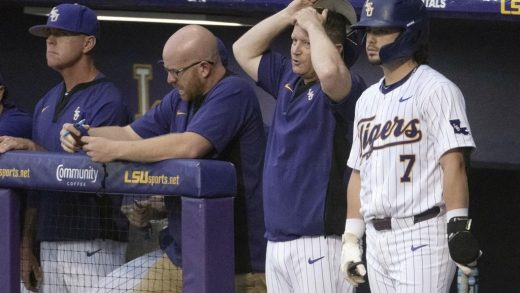
Auckland firm Writer’s Toolbox says it is about to release an enhancement to its artificial intelligence software that will help students pass a new compulsory NCEA writing test.
The company has grown to employ 60 staff, picked up a High Tech Award for “most creative technology solution” and won business from 600 schools around the world since founder, Ian Hunter, set out in 2011 to tackle a decline in students’ writing standards he observed as an academic at Auckland University.
Writer’s Toolbox invested more than $10 million over 10 years building an AI engine it first released in 2020, trained on a “billion-word database” of student writing that it had curated over that period.
The tool uses that database to analyse students’ writing skills and provide feedback on the two things they are doing best, the two things they need to improve, and gives them a goal.
Hunter said training an AI tool to provide advice on writing was a hard one to crack, given there were so many permutations to how something could be written.
“You have to write algorithms around coherence, fluency and development and then test and retest and over years.
“We’ve used ‘discovery learning’, advances in applied linguistics and neuroscience because it’s not just what you tell the child in that ‘teachable moment’; it is also about what you withhold, because in withholding, you lead them on a journey, and that’s why it’s teaching.”
Supplied
Writer’s ToolBox is designed to do more than check grammar.
Data from Australia showed it was helping students achieve higher grades, he said.
“Every Australian child is tested at years ‘three, five, seven and nine’ in reading, writing and mathematics and those Naplan scores are tracked.
The rate of improvement in Naplan scores achieved by schools that used Writer’s Toolbox was “between two and 10 times the rest of Queensland in writing”, he said.
New Zealand schools will start phasing in new literacy and numeracy tests from next year that will later become compulsory in order to pass NCEA at each level.
A pilot earlier this year indicated that about 46% of students would fail the standard as it stood, prompting a warning from Secondary Principals’ Association Vaughan Couillault that many high school students would not be prepared.
Hunter said its new diagnostic test would mirror the NCEA test and was confident it could help get students through the new standard.
“It will not only tell you whether you’re going to pass or fail, but it will tell you what you need to do to improve and succeed.
“We’re going to tell New Zealand students explicitly what they need to improve and how to do it; how to fix the remedial skills that are required.”
Supplied
The company has been building a growing base in Australia but says the competition for schools’ discretionary spending is fierce.
Hunter said students were doing more writing than ever.
“The average year-13 student, today, will write between 55,000 and 77,000 words before they even sit an exam in all the internal pieces of work they submit, while the longest essay they’ll do at university is 1500 words at ‘stage one’.
“There is no oversight over the workload on school students in the different curriculum areas.”
But teaching skills were an issue, he believed.
“We haven’t taught about three generations of teachers how to teach writing. We’re teaching them how to teach reading and handwriting, but nobody teaches the art of composition.”
The software costs $35 per student per year and the competition for schools’ IT budget was fierce, Hunter said.
“So much now in schools is the delivery of IT platforms and schools have only got limited budgets.”
Gianina Schwanecke/Stuff
Education Minister Jan Tinetti announces compulsory teaching requirements for maths, reading and writing while at Johnsonville School.
Whakatane High School teacher Joss Matthews said she was seeing really good results from the “highly interactive” software, which gave students immediate feedback on how they were performing.
“One thing we have seen is students that have used it in primary school, and have come through with that learning into secondary school, will excel in their writing.
“As soon as they came into school and picked up this toolbox again, they were ‘off’ and the quality of the writing that students from primary school come into school with is exceptional.”
Matthews said the spending on technology had been made easier because there was such a focus on literacy at the moment.
“We don’t have enough teachers; we don’t have enough experts that can get to those kids.
“Until we’ve got enough human beings to have immediate contact, this is a really cool, interactive platform that will help support students with their writing.”
Philippa Wintle, the English subject leader of an Auckland high school, said she had no direct experience of Writer’s Toolbox, but it would be a “massive call” for a department such as her own to spend some of its budget on a tool that wasn’t necessarily reflective of its pedagogical beliefs.
”I’m personally reluctant to purchase technology to improve students’ writing and would rather learn how to integrate the free technology that exists into my own teaching practice,” she said.
“I want my teachers to be really creative and understand technology deeply. I want them to think about interesting ways they can bring it into their teaching, and I don’t know if there’s the same opportunity for that experience with something that’s ‘already been done for you’.”
As an example, in a recent lesson, a class had instructed ChatGPT to generate prose for an assignment, including some figurative language, and then had a discussion about how effective it had been and how it could be improved, she said.
“For me, that’s a much more bespoke and exciting way to use technology, as opposed to paying somebody else a butt-load of money who doesn’t know my students to do that for me.”
It was important to talk to students about the feedback technology tools provided, for example what they thought would happen if they did what they told them to do and whether it was relevant, she said.


